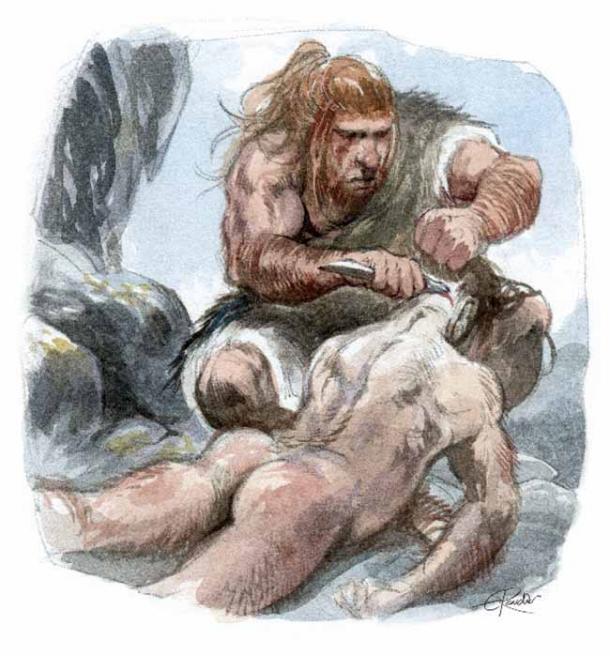Ancient And Modern Cannibalism: A Question Of Taste
Of all the horrible and shocking things that human beings can do to one another, nothing alarms, disgusts, terrifies – or fascinates – more than cannibalism. The subject is intriguing, in part, because of its complexity. What causes people to eat other people? Researchers have divided cannibalism into at least nine categories, with some of the main types being survival, aggression, and ritual. Survival cannibalism involves both necrophagy - eating the dead so as not to waste the calories - and killing others to make it through famines. Aggressive cannibalism is more about hunting and eating one’s own species because it is easy, or some humans have simply developed a taste for it. Ritual cannibalism is complicated, and in many cases, it is related to religion. Much of it, however, centers around honoring loved ones or keeping their essence nearby. Other ritual cannibalism stems from wanting to assume the strength, courage, or other desired aspects of a fallen enemy.

Prehistoric cannibalism by © Emmanuel Roudier (2008) Musée National de Préhistoire, Les Eyzies. (Permission granted to Dr N Bockoven)
Were Neanderthals Cannibals?
Were Neanderthals really cannibals? The short answer is yes, a fair percentage of them were. The renowned paleogeneticist and recent Nobel Prize winner, Svante Pääbo, states that human bones with cut marks or percussion breakage to extract marrow are " typical of many, even most, sites where Neanderthal bones are found." Pääbo is the man responsible for sequencing the first full genome of a Neanderthal in 2010. That same year, he sequenced the genome of a human the world knew nothing about, and he thereby introduced the Denisovans.
Neanderthals certainly were not alone in their cannibalism. Homo sapiens have their own rich history of it. Strong evidence of Paleolithic to Bronze Age cannibalism has been found in at least 18 widely dispersed archaeological sites in Europe. Lower and Middle Paleolithic (Neanderthal and older) cannibalism accounts for about half of these, including Goyet, Belgium, Gran Dolina and El Sidrón in Spain, Moula-Guercy, Combe-Grenal, Caune de l'Arago, and Les Pradelles in France, and Vindija and Krapina in Croatia. Several other sites have probable cannibalism. Krapina is the site with the largest collection of separate Neanderthal remains, and most researchers agree that portions of more than 80 individuals have been found there. The bones indicate that Neanderthals, to paraphrase philosopher Thomas Hobbes, lived lives that were nasty, brutish, and short. The typical age at death was between 14 and 24 years.
Like this Preview and want to read on? You can! JOIN US THERE ( with easy, instant access ) and see what you’re missing!! All Premium articles are available in full, with immediate access.
For the price of a cup of coffee, you get this and all the other great benefits at Ancient Origins Premium. And - each time you support AO Premium, you support independent thought and writing.
Dr Neil Bockoven is an award-winning PhD geologist who earned his doctorate in geoscience from the University of Texas at Austin. He is the author of The People Eaters and Moctu and the Mammoth People and presenter of Paleo Human Mysteries
Top Image: Cannibal feast on the Island of Tanna, New Hebrides by Charles E. Gordon Frazer (1863-1899). ( Public domain )
By: Dr Neil Bockoven


















